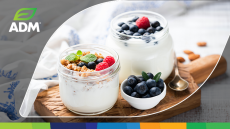Reduced sodium ingredients contribute to salt effort
salt replacers and flavour enhancers, as suppliers contribute to
overall efforts by tweaking processes to make lower sodium
ingredients.
A body of evidence has linked excess salt (sodium chloride) in the diet to an increased risk of high blood pressure and stroke.
Campaigns are underway around the world to encourage consumers to reduce their daily intake.
The UK's Food Standards Agency (FSA) advises that adults should consume no more than six grams of salt a day.
Hand-in-hand with this is a major effort to reduce the 'hidden' salt in packaged foods.
The FSA, for instance, has established voluntary salt reduction targets for a variety of food products by 2010.
While an important part of reformulating foods to contain less salt lies with enhancing the taste of the salt that is there, ingredients companies are collaborating with their customers to do their part in reducing sodium in the individual components that go in to a finished product.
Lower-sodium ingredients Earlier this month Israeli firm Solbar launched a new isolated soy protein with about a quarter of the sodium usually found in isolates, called Solpro 957.
Sodium is typically used in the extraction process for soy protein isolates, and sodium levels in the ingredient are estimated to be between 11000 and 13000 ppm.
Solbar, however, says it has found a way to reduce this to 3000 ppm, or 300mg/100g. Gary Brenner, VP marketing and development, said that the company achieved this by adapting the process.
"We are adjusting the levels of pH by using calcium instead of sodium."
Since the method is proprietary, Brenner was not at liberty to disclose more details.
But he said that the key issue has been to lower the sodium content and still maintain an acceptable flavour profile.
Dutch flavour company Exter last week unveiled its new range of natural savoury flavours.
Amongst other benefits on-line with current trends, most of the flavours in the range have a sodium content that is between 10 and 25 per cent lower compared with current alternatives.
Although the main driver behind developing the oven-processed range was demand natural, MSG- and E-number-free flavours, Lambert ten Haaf, director of sales and marketing, told FoodNavigator.com that the company considered sodium right at the beginning of the development process.
He confirmed that some customers have requested lower sodium flavours, and some of Exter's other products also come with the option of lower sodium content.
In keeping with the company's philosophy on flexibility, ten Haaf said: "We can explore it together if someone asks".
Manufacturers open to collaborate Gerrit Smit, director of Unilever's Food and Health Research Institute Director, told FoodNavigator.com that the manufacturer would "definitely" be interested in lower-sodium versions of ingredients.
"We do evaluate a lot of stuff that comes to us, to test the effect of such ingredients and see if they actually work."
Salt reduction figures large on Unilever's agenda, as part of a broader attention to overall composition that also involves looking at sugar content and good fats.
This holds true for "all categories, and worldwide," said Smit, with recipes of all products taken into account and benchmarked with international guidelines.
When a product's composition is in keeping with international dietary guidelines across various nutrients, including salt, it qualifies to bear Unilever's My Choice logo.
With regard to whether the composition stems from the manufacturer itself, or from initiatives by its partners, Smit said: "It doesn't matter how we get there, as long as we get there."
Unilever has previously asked its suppliers to come up ingredients that are lower in sodium.
In particular, it worked with its flavour suppliers through its open innovation framework.
Working in this way means the flavour suppliers are fully on board with what Unilever is trying to achieve, and allows them to see whether there are opportunities to develop solutions together.
This is just one part of Unilever's overall efforts, however; Smit stressed the need for a "multiple, combination approach for the biggest impact".
This includes investigations on how reducing salt can impact on aroma and other sensory perceptions, use of salt replacers for a short-term fix, and longer-term screening for new ingredients over a longer-term.
Since Unilever's efforts span its entire portfolio, and salt-reduction on a product-by-product basis would take a very long time, it is developing a "toolbox" towards reducing salt.
The aim is to identify ingredients or approaches that would work across most of a product category.
A spokesperson for Nestle told FoodNavigator.com that that company, too, is looking at "every possibility for salt reduction" , including sourcing ingredients with lower sodium.
Some product categories are being given priority, such as snack foods and ready meals - and she agreed that some products will prove easier to reformulate than others.
Nestle also has a partnership with Senomyx, under which it is working to find solutions to flavour challenges, such as how to lower salt content but still have an acceptable savoury taste.
The great salt reduction effort Since 2002 Nestle claims to have removed some 5,000 metric tonnes of salt from its products.
By the end of 2010 it wants to bring down the salt content in all products to 75 per cent of the original - and this target is also being borne in mind for new product development.
The Food and Drink Federation (FDF) claims the UK is leading the world in salt reduction.
It said in January that, since 2004, the recipes used for at least £15bn worth of foods have less fat, sugar and salt.
A further £11.5bn worth of products have been launched as 'lower in' versions.















